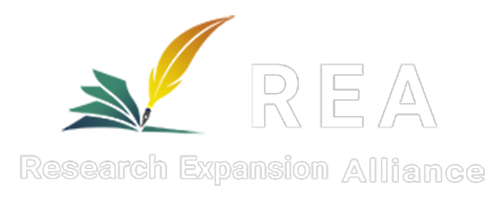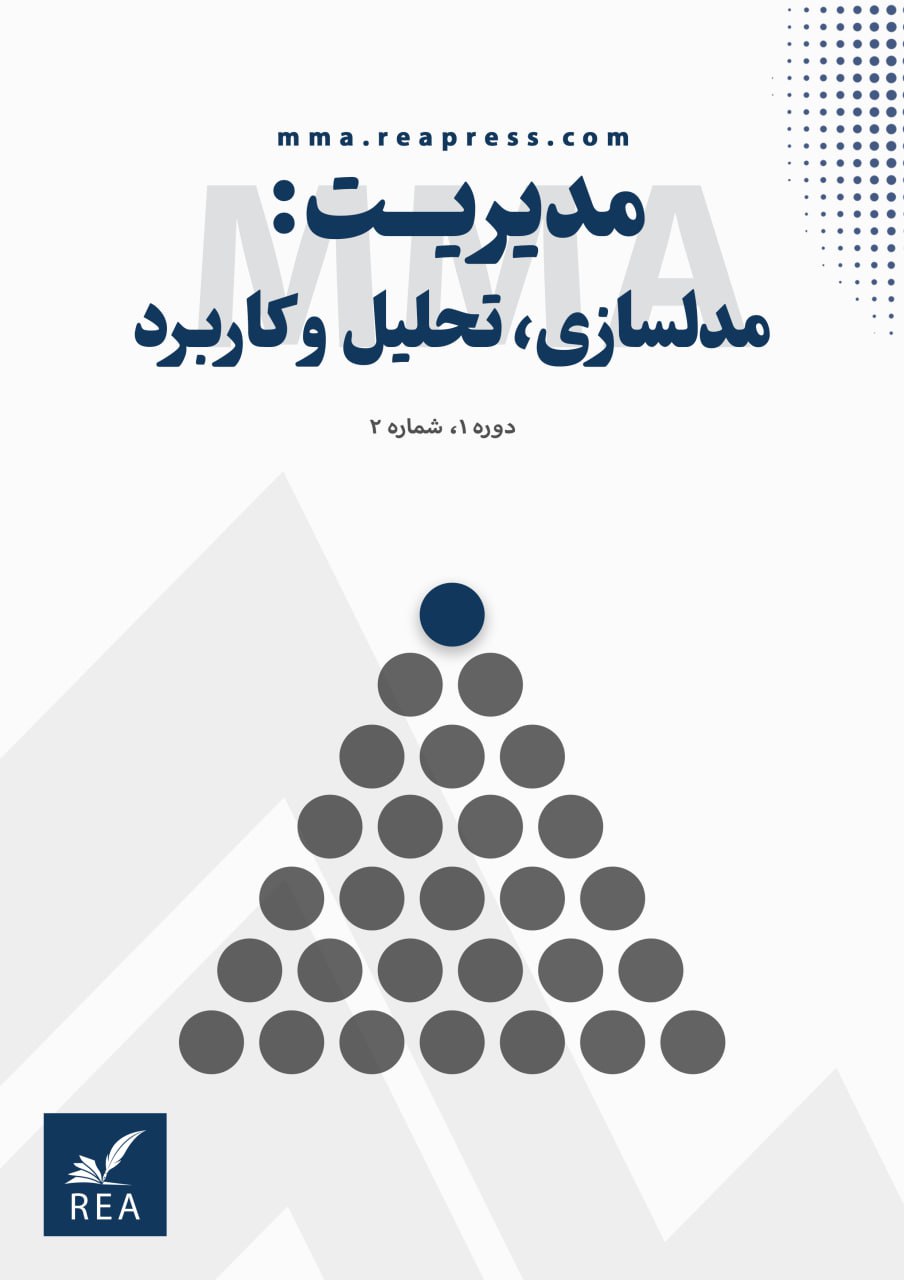ارزیابی بلوغ مدیریت دانش واحدهای سازمانی با استفاده از تحلیل پوششی دادهها
چکیده
هدف: هدف این پژوهش ارزیابی بلوغ سازمانی با بهکارگیری مدل بلوغ مدیریت دانش و تحلیل پوششی دادهها در یک شرکت مهندسی مشاور بود. هدف اصلی، سنجش سطح بلوغ واحدهای سازمانی و شناسایی نقاط ضعف و قوت آنها برای ارایه راهکارهای بهبود و افزایش اثربخشی فرآیندها بود.
روششناسی پژوهش: این پژوهش از نظر هدف، کاربردی و توسعهای است و جامعه آماری آن شامل ۶ واحد سازمانی یک شرکت فنی و مهندسی میباشد. چارچوب نظری پژوهش با هشت معیار اصلی (1- استراتژی، 2- رهبری، 3- فرهنگ، 4- ساختار، 5- تکنولوژی، 6- فرآیندها، 7- افراد و 8- ارزیابی) طراحی شد. دادههای جمعآوریشده با استفاده از نرمافزار EMS و مدل پوششی دادههای BCC ورودیمحور تحلیل شدند.
یافتهها: یافتهها نشان داد که واحدهای سازمانی در سطوح مختلف بلوغ (۳ تا ۵) قرار داشتند. واحدهای ۵ و ۶ بهترتیب با امتیازات ۲۹۰ و ۲۳۳ در سطح ۵ (بلوغ) قرار گرفتند، در حالی که سایر واحدها در سطوح پایینتری بودند. نتایج DEA نشان داد که تنها واحد شماره ۵ با کارایی ۱، کارا بوده و سایر واحدها ناکارا هستند. واحد شماره ۱ با کمترین کارایی بیشترین فاصله را با مرز کارایی داشت.
اصالت/ارزش افزوده علمی: ارزش افزوده این پژوهش، تلفیق نوآورانه مدل بلوغ مدیریت دانش با DEA برای ارایه یک ابزار ارزیابی دقیق است. این رویکرد به سازمانها امکان میدهد با شناسایی عینی شکافهای عملکردی، اقدامات کنترلی هدفمندی مانند آموزش، تسهیم دانش، نوآوری و تدوین راهبرد دانشی را برای ارتقای بلوغ مدیریت دانش طراحی و اجرا نمایند.
کلمات کلیدی:
بلوغ، مدیریت دانش، تحلیل پوششی دادههامراجع
- [1] Rezaei Noor, J., Lak, B., & Jafari, M. J. (2017). Presenting a knowledge management maturity assessment model based on the fundamental factors of knowledge management success. Quarterly journal of resource management in the police force, 5(20), 121-144. (In Persian). https://www.magiran.com/p1817101
- [2] Rezaeemanesh, B., Mohammadnabi, S., & Mohammadnabi, S. (2012). Knowledge management application in measurement of organizational maturity. Iranian journal of information processing and management, 27(4), 985-1009. (In Persian). https://jipm.irandoc.ac.ir/article_699178.html?lang=en
- [3] Bertino, E., Khan, L. R., Sandhu, R., & Thuraisingham, B. (2006). Secure knowledge management: confidentiality, trust, and privacy. IEEE transactions on systems, man, and cybernetics - part a: Systems and humans, 36(3), 429–438. https://doi.org/10.1109/TSMCA.2006.871796
- [4] Nonaka, I. (1991). The knowledge creating company. Harvard business review, 69(6), 96–104. https://hbr.org/1991/11/the-knowledge-creating-company-2?utm_source=chatgpt.com
- [5] Sarmadi, M. R., & Effati, F. (2019). Assessing maturity level of the knowledge management based on the APO model and providing suggested strategies for implementation (A case study: The municipality of Tehran). Knowledge retrieval and semantic systems, 6(21), 1-23. (In Persian). https://doi.org/10.22054/jks.2020.48833.1261
- [6] Keshavarzi, A. H., & Radseresht, M. (2018). An appraisal of the knowledge management maturity level, and providing improvement plans (Case study: Havanaja). Journal of strategic management of organizational knowledge, 1(1), 11-47. (In Persian). https://www.magiran.com/p1896589
- [7] Shams Zare, M., Tahmasbi, R., & Yazdani, H. R. (2018). Evaluating the maturity of human resource management processes based on philips model. Journal of research in human resources management, 10(1), 1-24. (In Persian). https://dor.isc.ac/dor/20.1001.1.82548002.1397.10.1.1.4
- [8] Mochamad, A. W., & Waluyo, R. (2015). Knowledge management maturity in construction companiesan). Procedia engineering, 125, 89-94. https://doi.org/10.1016/j.proeng.2015.11.014
- [9] Niknamian, S. (2019). The relationship between valuation criteria and maturity level of knowledge management: An empirical analysis. IUP journal of knowledge management, 17(2), 7–20. https://B2n.ir/rf7790
- [10] Chiu, C. N., & Chen, H. H. (2016). The study of knowledge management capability and organizational effectiveness in Taiwanese public utility: The mediator role of organizational commitment. SpringerPlus, 5(1), 1520. https://doi.org/10.1186/s40064-016-3173-6
- [11] Arias-Pérez, J. E., & Durango-Yepes, C. M. (2015). Exploring knowledge management maturity from funcionalist and interpretivist perspectives. Entramado, 11(1), 94–104. https://doi.org/10.18041/entramado.2015v11n1.21112
- [12] Ramadhani, S., & Tjakraatmadja, J. H. (2012). Knowledge management maturity level assessment (Case study of PT. XYZ). Indonesian journal of business administration, 1(9), 68546.
- [13] Chrissis, M., Konrad, M., & Shrum, S. (2003). CMMI guidelines for process integration and product improvement. Addison-Wesley Professional. Boston, USA. https://www.amazon.com/CMMI-Guidelines-Process-Integration-Improvement/dp/0321279670
- [14] Torkzadeh, M. (2010). Investigating the level of knowledge management maturity in government organizations in Kerman city and its relationship with employee empowerment [Thesis]. (In Persian)
- [15] Singh, S. K., Watson, H. J., & Watson, R. T. (2002). EIS support for the strategic management process. Decision Support Systems, 33, 71–85. https://doi.org/10.1016/S0167-9236%2801%2900129-4
- [16] Offermann, L. R. (2004). When followers become toxic. Harvard business review, 82(1), 54–63. https://www.researchgate.net/publication/8920263
- [17] Freeman, R. E., & Stewart, L. (2006). Developing ethical leadership. Business roundtable institute for corporate ethics, 9, 1–17.
- [18] Schein, E. H., & Schein, P. (2016). Organizational culture and leadership. Wiley. https://www.wiley.com/en-us/Organizational+Culture+and+Leadership%2C+5th+Edition-p-9781119212041
- [19] Borun, M. (2016). Organizational culture. National conference on organizational culture. (In Persian). Tehran, Iran, Civilica. https://civilica.com/doc/668358
- [20] Ahmadi, G. A., Mehrpur, M., & Niko Ravesh, A. (2015). Organizational structure. International conference on new challenges in management. (In Persian). Ardebil, Iran, Civilica. https://civilica.com/doc/592806
- [21] Sabohi Laki, B. (2015). Technology management, research and development. The third international conference on modern research in management, economics and accounting. (In Persian). Türkiye - Istanbul, Civilica. https://civilica.com/doc/554709
- [22] Foruzandeh, M. (2013). Process management and process approach. Standard and quality management journal, 3(1), 48. (In Persian). https://www.magiran.com/p1533855
- [23] Salehi, M., Rafiee, A. A., & Hosseinipour, S. (2010). Recognition of key employee characteristics and appropriate management practice through grounded theory. Journal of police organizational development, 6(6), 7. (In Persian). https://www.magiran.com/p765654
- [24] Azizi, M., & Azizi, hasan. (2015). Evaluating employee performance in the organization. The first international conference on the role of islamic revolution management in the power geometry of the global system (Management, politics, economics, culture, security, accounting). (In Persian). Tehran, Iran, Civilica. https://civilica.com/doc/402721
- [25] Ali Ahmadi, A. R., Barzinpour, F., & Karami, M. (2008). Comparison of knowledge management maturity models. Tadbir, 19(201), 21. (In Persian). https://www.magiran.com/p589212






